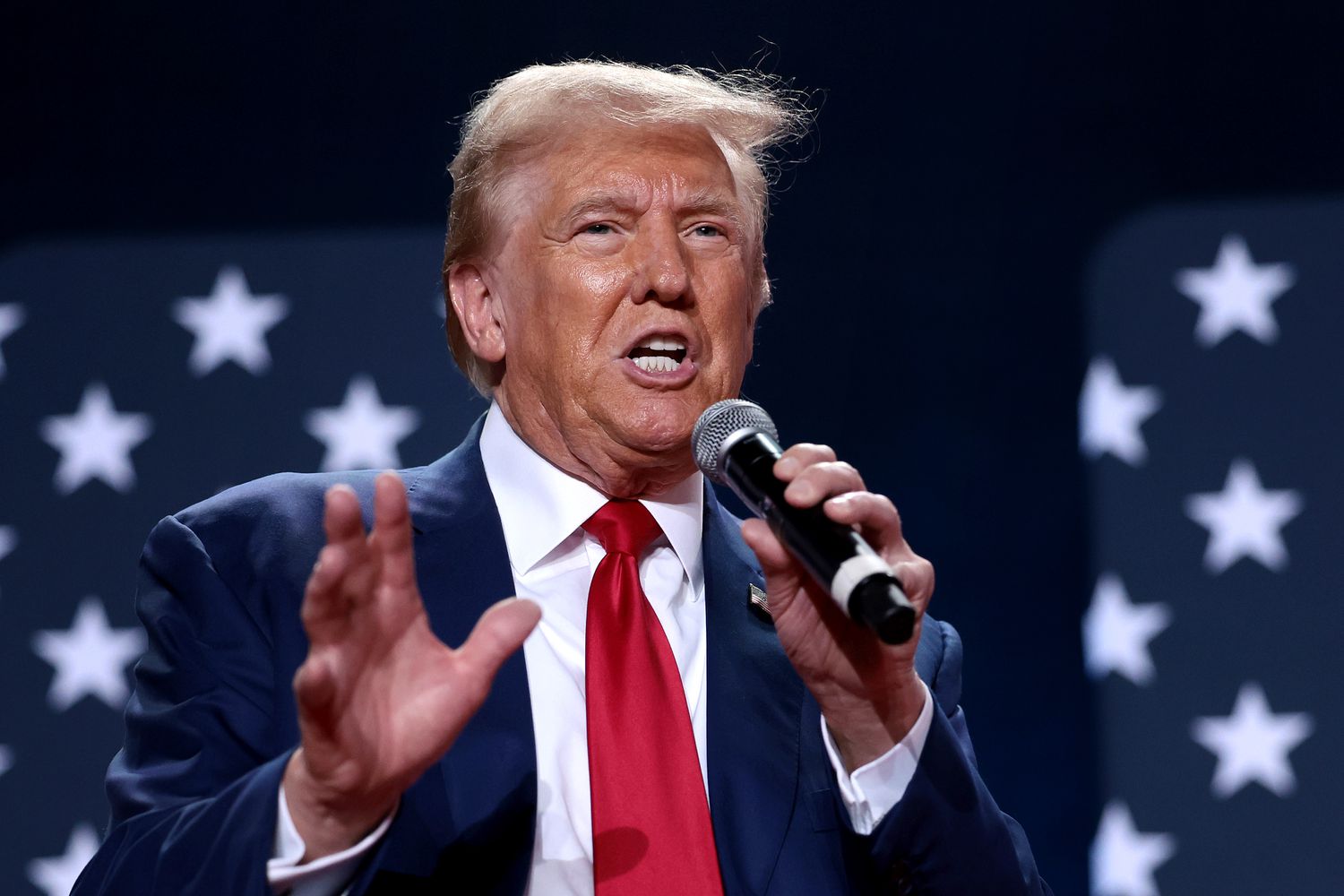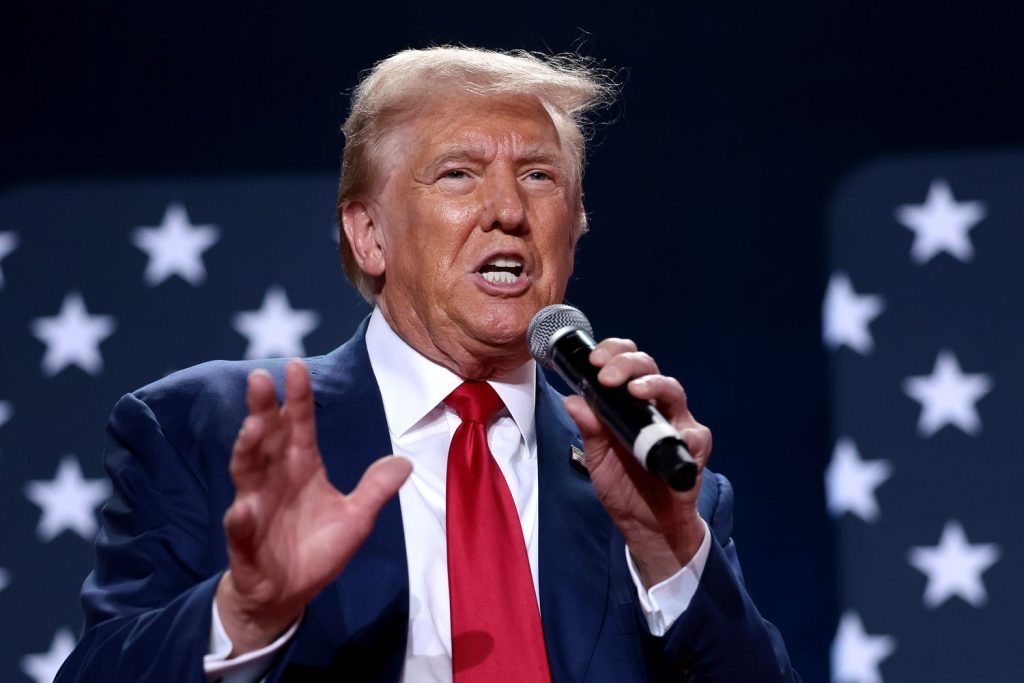Politics
why President Trump has imposed a $100,000 annual fee on H-1B skilled worker visa applicants: the rationale, intended effects, criticisms, and potential consequences.
Published
1 month agoon
By
dplanatenews
On September 19, 2025, President Donald Trump signed a proclamation that requires employers sponsoring H-1B visas (for foreign skilled workers) to pay an annual fee of $100,000 per visa. Financial Times+3AP News+3AP News+3 This is a sharp increase from the prior cost, which was in the order of a few hundred dollars (plus other fees) for registration, visa processing, etc. AP News+2Al Jazeera+2
The fee is applied every year (for each year the visa is valid) and is part of a broader overhaul of the U.S. temporary employment visa system. Al Jazeera+2AP News+2

Reasons given by the administration
Several rationales have been provided by the Trump administration and its officials. They include:
- Protecting U.S. workers’ jobs and wages
One of the primary justifications is that the H-1B program has been abused by some companies who use foreign workers instead of hiring qualified U.S. workers, often at lower pay. The administration argues that by drastically increasing the cost of invoking the H-1B program, only employers who really need scarce talent will be willing or able to pay. This is intended to reduce displacement of U.S. citizens and residents and raise wages where H-1B workers are used. Al Jazeera+2The White House+2 - Ensuring only “very highly skilled” workers benefit
Officials have said the fee is intended to weed out lower-skill or more commoditized uses of the program, pushing sponsoring employers to limit H-1B hiring to those with rare, uniquely high skills. The idea is: if it costs $100,000/year, companies will only sponsor if the worker is worth that cost—i.e., not for basic / entry-level work that U.S. workers could do. Financial Times+2Al Jazeera+2 - Curbing abuse and misuse of the H-1B visa system
The administration claims there has been “abuse” within the system, particularly with outsourcing and consulting companies that employ many H-1B workers and may pay them less or undercut prevailing wages. There is concern that some firms bring in H-1B workers even when there are capable U.S. workers available, or set up arrangements that reduce labor costs via these visas. The large fee is meant to serve as a deterrent for such practices. The White House+2Al Jazeera+2 - National security and economic competitiveness
The administration has also framed the change as partly about national interest: controlling which foreign workers enter, ensuring they are truly needed, and preventing negative effects on the domestic labor market, especially in STEM (science, technology, engineering, mathematics). They argue that the overuse of lower-level H-1B hiring suppresses wages and undermines incentives for Americans to enter these fields; that’s seen as a threat to both economic strength and national security. The White House+2The Times of India+2 - Shifting costs / raising revenue
Implicit in the fee is that it brings in significant cost burdens for businesses that use H-1B workers. The administration suggests this money could help offset other budgetary pressures, reduce taxes, or otherwise contribute to fiscal objectives. In some statements, Trump has said that people “coming in are going to be paying” and that the government will use that revenue, possibly to reduce debt or taxes. The Washington Post+1
Underlying policy and political context
To understand this change, one has to see it in the broader framework of Trump’s immigration policy and political priorities. Some of the broader factors include:
- Longstanding criticism of H-1B among conservative / populist circles
Many critics (especially in Trump’s base) believe that legal immigration, even skilled immigration, has sometimes harmed American workers by suppressing wages or displacing jobs. Tightening the H-1B system has been a consistent theme. - Pressure on tech & outsourcing sectors
Much of the pushback is focused on how companies, especially large tech or IT outsourcing firms, use H-1B visas. There are arguments that such firms use H-1Bs for relatively routine technical work rather than high-end R&D or scarce-specialty roles. So this move is also a push-back against what’s seen as excessive reliance on foreign labor for cost savings. - Global competition for talent vs. domestic political pressures
On one hand, the U.S. wants to attract top talent globally. On the other, there is domestic political pressure to prove that U.S. workers are being protected. Trump is aligning with voters who feel left behind or threatened by globalization, including in tech and jobs that used to be more secure. - Regulatory flexibility / executive action
This policy was implemented via proclamation, an executive move, rather than congressional statute. That reflects a broader pattern of using executive authority to make rapid immigration policy changes without having to wait for new laws. It also may reflect a belief that Congress is unlikely to pass stricter H-1B restrictions voluntarily.
Expected Effects and Consequences
Based on policy statements, expert analysis, industry responses, and historical data, here are some of the expected effects of this new fee, both intended and unintended:
- Reduction in number of H-1B visa applications / approvals
Many companies will find the $100,000/year cost prohibitive, especially for roles that generate lower margins or for employees who are less senior or in more standard tech/IT roles. This means fewer visa applications—or more selectivity in who gets sponsored—so H-1B use may drop significantly. Al Jazeera+3AP News+3Financial Times+3 - Increased cost burden on companies that still rely on them
For firms that do continue using H-1Bs extensively, especially large tech, consulting, and outsourcing firms, this will sharply increase operating costs. That could translate into higher prices, restructuring, or rethinking of workforce and staffing strategies. - Shift in hiring practices
Companies might reduce reliance on foreign skilled workers, ramp up training and hiring of domestic graduates, raise wages to attract domestic applicants, or locate more operations abroad rather than in the U.S. Some may redesign roles to comply with the new cost-benefit calculation. - Tech sector pushback and concerns about competitiveness
Critics warn that this change could harm U.S. innovation, especially in fields where there is a genuine shortage of domestic skilled workers (e.g., AI, advanced engineering, certain sciences). If the U.S. becomes less attractive to global talent—or if costs become too high—foreign experts may choose other countries with more favorable visa regimes. That could reduce U.S. leadership in technology. Several trade and industry bodies (for example from India) have already raised concerns about disruption to projects and business continuity. Reuters+1 - Legal challenges
Some legal experts question whether the President has the authority under existing law to impose such a large fee via executive proclamation. They argue that fee-setting powers are usually tied to congressional authorization (e.g., fees to recover processing costs, filing fees etc.), but an annual fee of this magnitude may be beyond that authority. Al Jazeera+1 - Economic ripple-effects
Because many companies (especially in tech, consulting, R&D) have business models relying on skilled foreign labor, this change could cause ripple effects—not just on visa holders but on related industries: contracting, universities, research institutions, service providers, etc. Also, smaller companies or startups (with thinner financial margins) could be disproportionately impacted.
Criticisms and counterarguments
As with any major policy shift, there are many criticisms and counterpoints:
- Talent drain risk: By making it much more costly to bring in foreign experts, the U.S. risks losing top global talent to countries with more welcoming visa policies, thereby undermining innovation and growth.
- Mismatch between policy and need: In many tech / STEM fields, domestic labor supply does not always meet demand. Some roles genuinely lack sufficiently qualified U.S. candidates; making it harder to bring in foreign experts might slow progress in certain sectors.
- Disproportionate impact on certain countries / companies: Many H-1B visa holders come from certain nations (e.g. India, China). Outsourcing firms (often headquartered abroad or serving U.S. clients) might be especially affected. Also, small and medium-size companies with tighter budgets could be hurt far more than big tech firms.
- Implementation and administrative burdens: Enforcing, monitoring, and adjudicating which visa petitions merit exemptions or are in “national interest” could create delays, uncertainty, and extra regulatory/compliance costs.
- Legal / constitutional issues: Some argue the President may be overstepping authority, bypassing Congress. The INA (Immigration and Nationality Act) provides only limited authority for fee imposition; exceeding that could prompt lawsuits.
Broader significance
This policy change is not just about visas or cost; it reflects deeper trends and messaging in U.S. immigration politics:
- A shift toward protectionism in labor markets, even among skilled and legal immigration channels.
- A tougher stance on legal immigration overall—not only border enforcement, but also tightening of visa and worker programs.
- The use of fees and regulatory levers to change behavior (of employers, of industries) rather than only immigration quotas or bans.
- Political balancing: appealing to constituents worried about wage stagnation, job displacement, or perceived unfair competition from foreign workers, while trying to preserve narratives about maintaining U.S. global leadership in tech.
In summary
The imposition of a $100,000 annual fee on H-1B visa applicants is a dramatic recalibration of U.S. visa policy under Trump. Its stated reasons are:
- restraining what the administration sees as abuse of the H-1B system,
- directing it more toward “very highly skilled” workers,
- protecting U.S. jobs and wages,
- conserving national security and economic interests,
- and generating revenue, or at least shifting costs.
But while these are the intentions, the measure also raises serious concerns: economic fallout, harm to competitiveness, legal challenges, impact on industries and individuals who have depended on H-1B visas, and potential chilling effects.
Whether the policy will achieve what its proponents claim—raising wages, protecting American workers, improving talent flows—remains to be seen; much will depend on how it is implemented, how businesses adapt, whether courts uphold it, and what the responses are both domestically and internationally.

